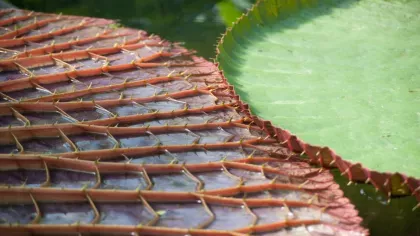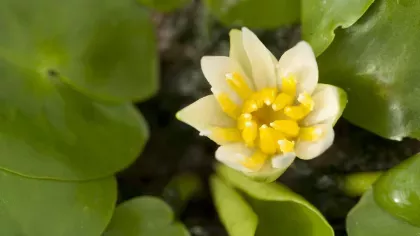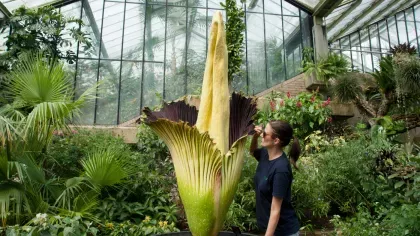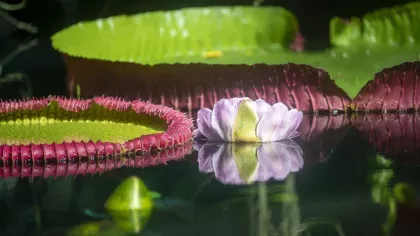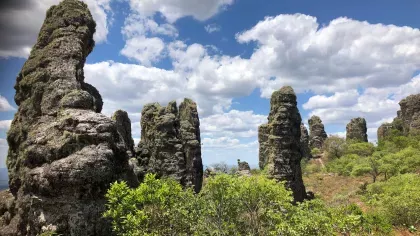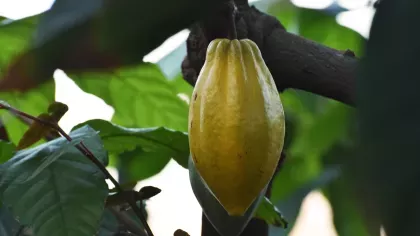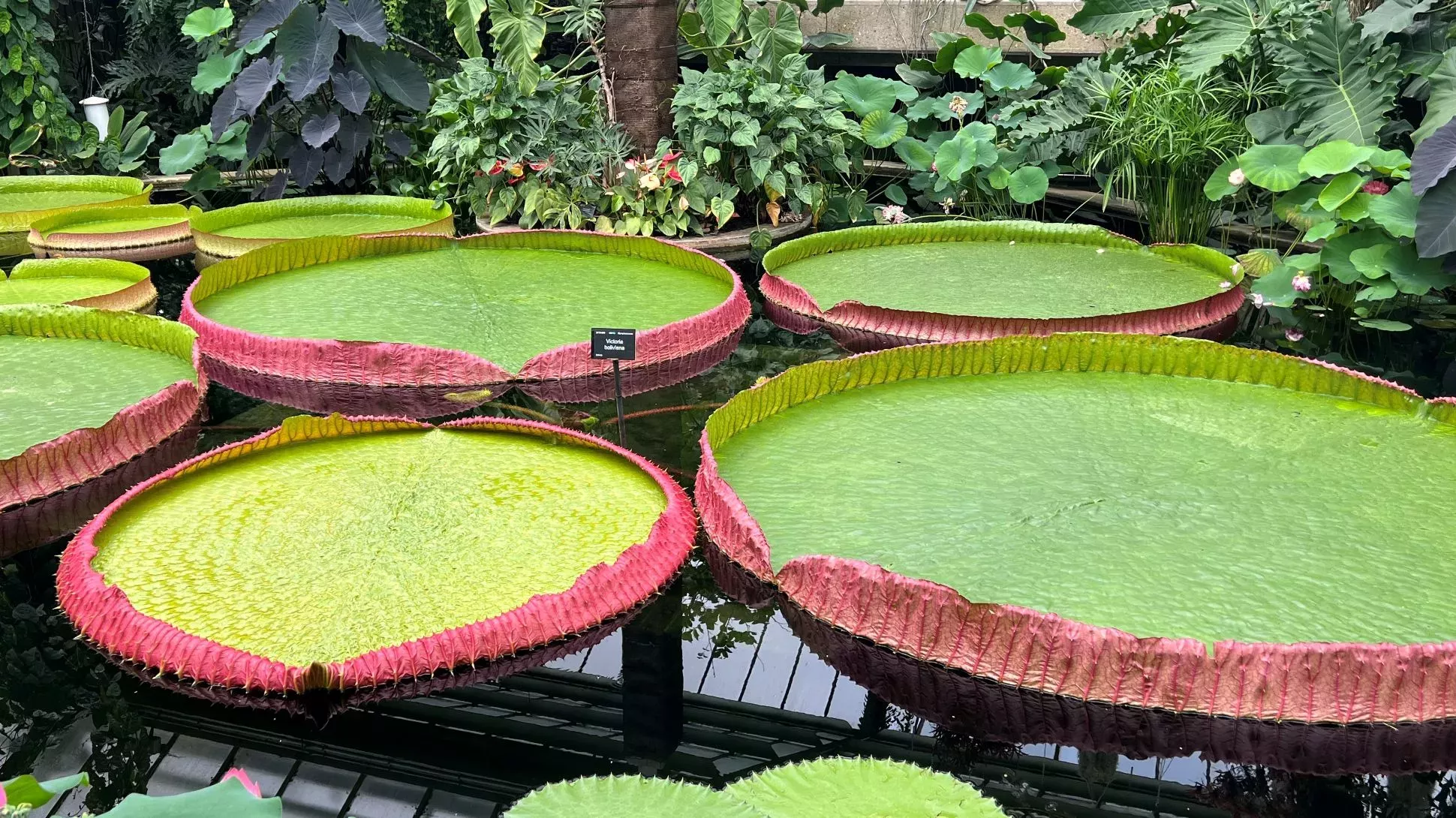
Bolivian waterlily
On this page
Until 2022, the giant waterlily (Victoria amazonica) was the undisputed largest waterlily in the world.
But through the combined work of experts across the globe, new to science species Victoria boliviana, or the Bolivian waterlily, dethroned the reigning queen.
The first new giant waterlily species identified in over a century, V. boliviana was discovered through historical records, herbarium specimens and DNA analysis.
In fact, a V. boliviana specimen had been hiding in Kew’s Herbarium for 177 years after being misidentified as V. amazonica.
Victoria boliviana is the largest known species of waterlily in the world, with the record leaf size of 3.2 metres recorded in La Rinconda Gardens in Bolivia.
Plant description
The Bolivian waterlily leaves can grow just over 3m wide, and float on top of the surface of the water. The leaves unfurl over a number of days on the waters surface, pushing other plants and leaves out of their way as they do so. They have a large rim which grows around 7cm tall. The top side of the leaf is a bright green, and the outer rim a bright red colour. The underside is supported by a series of fleshy ribs covered in sharp spines. The flower grows as a smooth bud underwater, then blooms at night. Flowers start white on the first night, then turn pink on the second night, after which point, they close and die. When pollinated, the flower produces seeds around 5mm across.
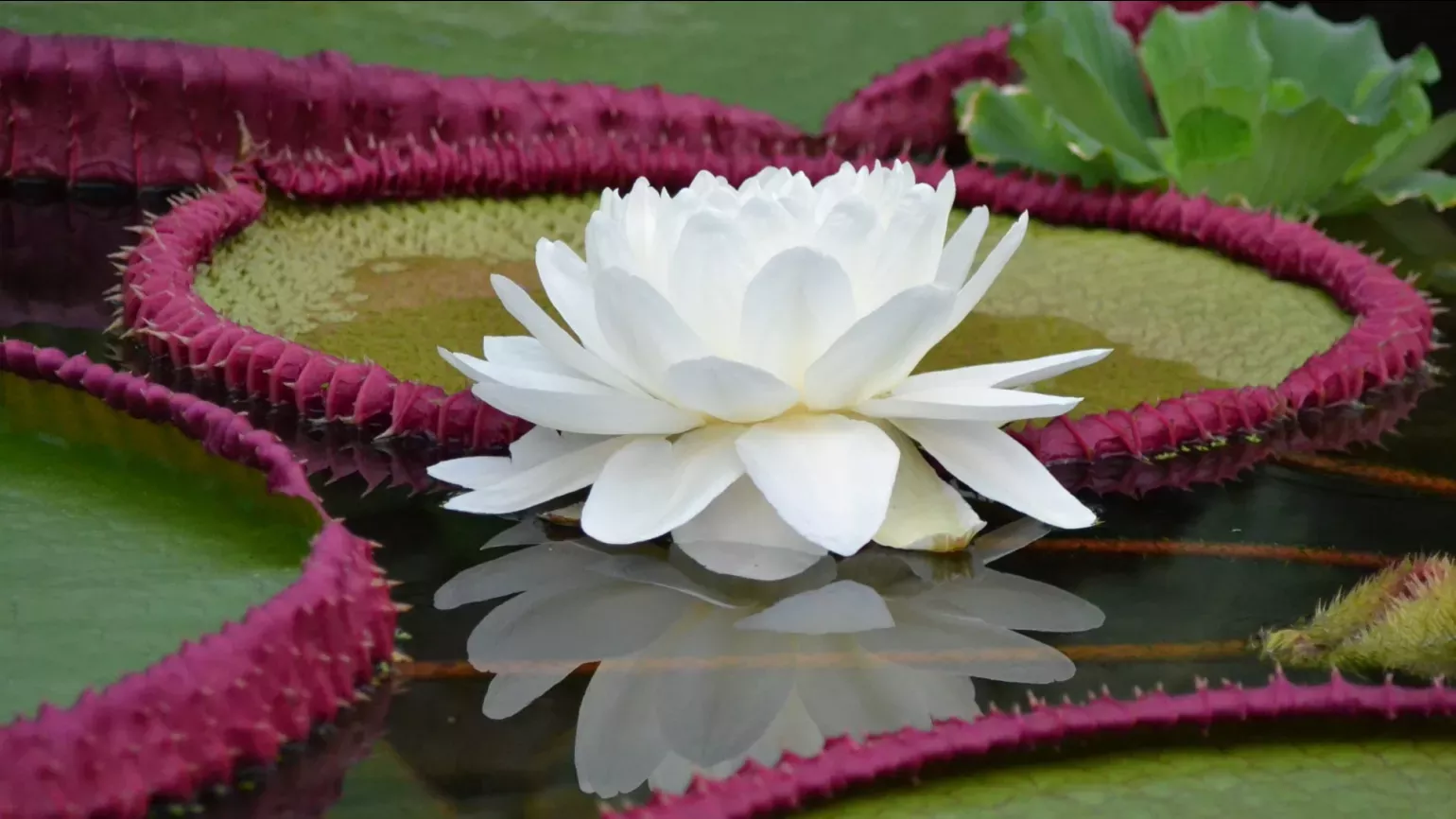

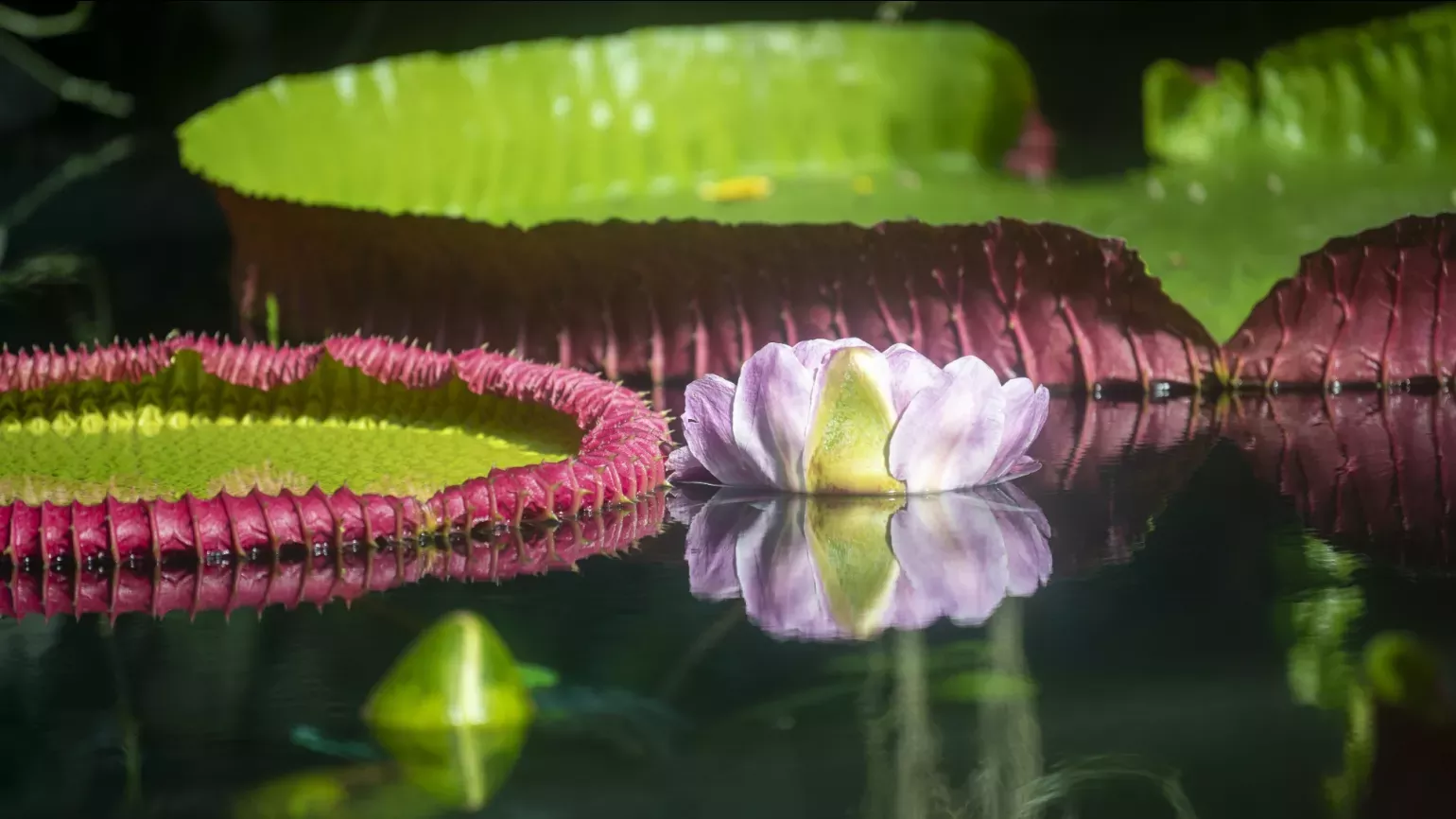
Plant uses
Cultural
V. boliviana is grown in botanical gardens due to its impressive size.
Did you know?
It’s thought that the Bolivian waterlily is pollinated by a beetle, similar to its cousin V. amazonica, although more research is needed to confirm this.
In 2023, the Bolivian waterlily was awarded the Guinness World Record for the largest species of waterlily, the largest waterlily leaf and the largest undivided leaf.
Where in the world?
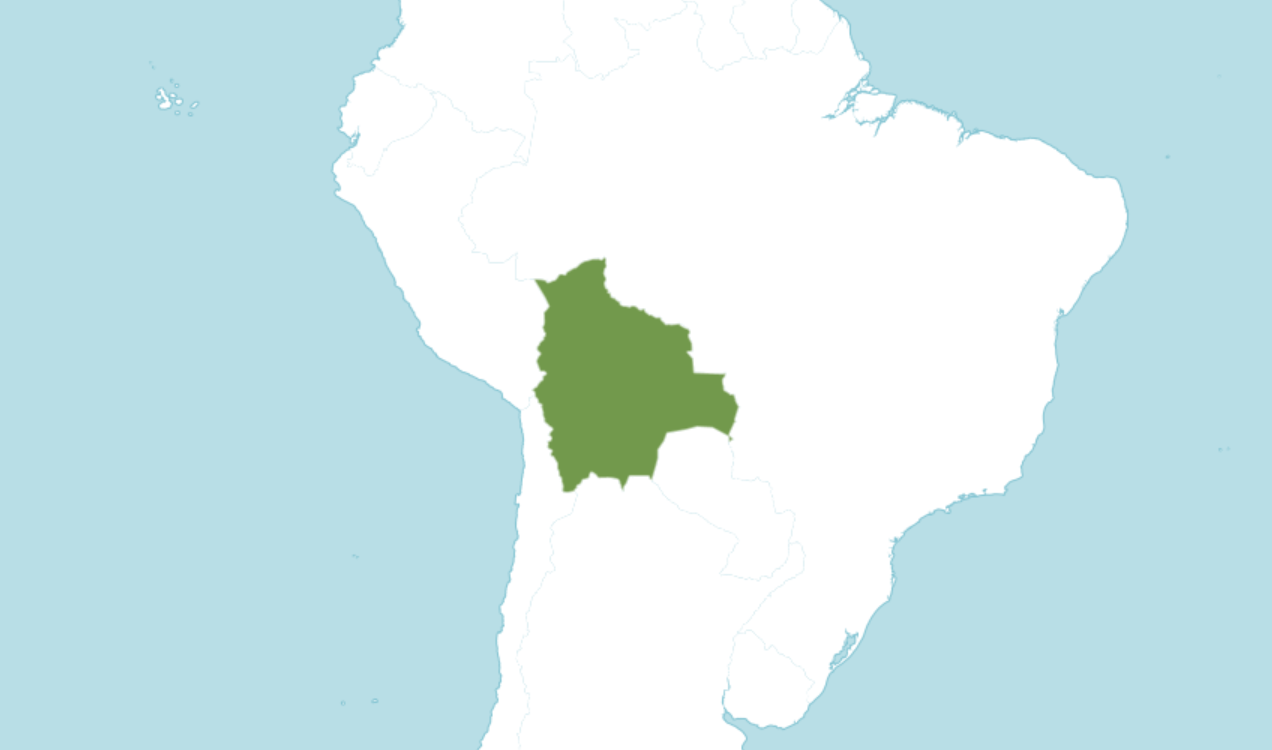
Bolivian wetlands.
Find it in our gardens
Kew Gardens
A botanic garden in southwest London with the world’s most diverse living plant collection.
Location
Waterlily House, Princess of Wales Conservatory
View map of Kew GardensBest time to see
Our work
After suspecting for years there was a third species in the Victoria genus (alongside V. amazonica and V. cruziana), Carlos Magdalena, a world expert on waterlilies and one of Kew’s senior botanical horticulturists, began making enquiries to gardens in Bolivia.
In 2016, Bolivian institutions, Santa Cruz de La Sierra Botanic Garden and La Rinconada Gardens, donated a collection of giant waterlily seeds from the suspected third species.
As Carlos grew the seeds back at Kew, watching the waterlily grow side-by-side with the two other Victoria species, he knew immediately something was different. V. boliviana has a different distribution of prickles and seed shape to other members of the Victoria genus, making it distinct.
Kew Scientists also analysed DNA to show that V. boliviana was very genetically different from the other two species. Together, the data collected confirmed what the Carlos had suspected – that there was another species in the Victoria genus, joining V. amazonica and V. cruziana.
Describing new species to science is crucial to conservation efforts in the face of biodiversity loss and climate change.

